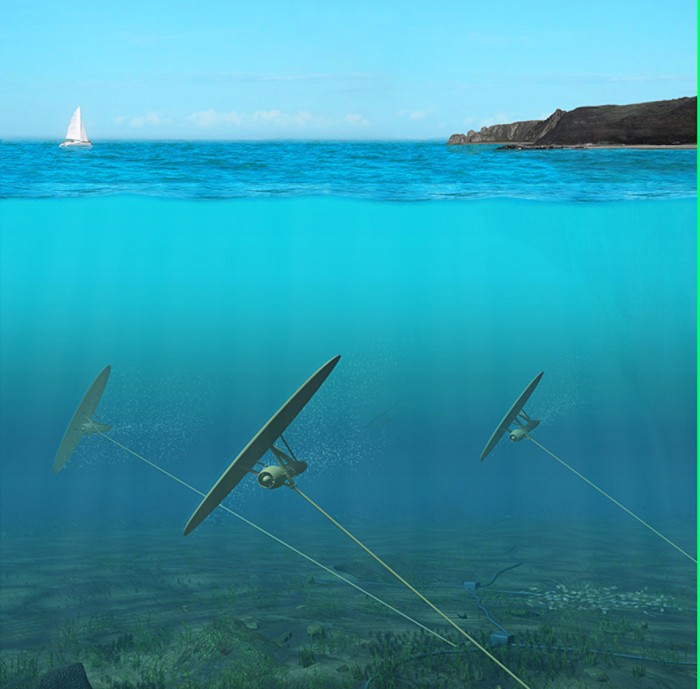The big islands like Aruba are not the only ones to need energy alternatives. Antigua and Barbuda are among the leeward islands in the West Indies, boasting white beaches, lush coral reefs and favorable sailing weather. Most of the 80,000 people who live in on the two islands are involved with entertaining visitors to the tropical paradise. Like all the other islands in the Caribbean Antigua and Barbuda are heavily reliant on imported fossil fuel to keep the island nation’s tourist trade humming.
In early 2019, the government of Antigua and Barbuda signed a memorandum of understanding with Sweden’s Minesto AB (7MN: FRA) to study an alternative tidal power technology. The United Nations is facilitating the study.
Minesto's tidal power solution called Deep Green takes a lesson from wind power. Instead of wind its is ocean current that drives the turbine. Built like a 'wing', Deep Green 'flies' under the water in an eight-shaped trajectory. The device is actually moving at a faster speed than the underwater current. This makes it possible to generate significant amounts of energy even from slow moving tidal currents. Consequently, Deep Green can be deployed in less hostile ocean environments, unlike some other tidal power solutions that must seek harsher, fast current location and then are bedeviled by maintenance issues.

Minesto has yet
to generate revenue from their Deep Green
tidal energy solution. As a consequence,
the company used Krona 33.6 million (US$3.5 million) in cash resources to
support operations over the last year. At the end of December 2018, the company
had Krona 2.9 million (US$300,000). That
might seem a bit alarming, but it is important to note that Minesto also has
Krona 49.1 million (US$5.1 million) in current receivables on its books.
The company remains
heavily reliant on successive capital raises to keep the doors open. Sweden’s private equity firm BGA Invest
has been an investor since 2010.
Additionally, money has come from the Swedish Energy Agency
and the Carbon Trust. The company’s last major capital raise its
initial public offering in 2015, when Euro 14 million (US$15.5 million) in
common stock was sold.
It is not clear
when Deep Green will gain traction
commercially. Besides the Caribbean,
Minesto is working on potential projects in Taiwan and the Faroe Islands in the
North Atlantic.
Past deployments
provide the data to convince prospective customers of Deep Green’s merits. A prototype of the device was deployed in
2013 in Northern Ireland. The project of
the coast of Strangfold Lough has provided ample evidence that the device
works. In 2018, a commercial scale
system was deployed in Holyhead Deep, Wales, providing final verification of
the system’s potential. In early August
2019, the company reported the resumption of sea tests in Holyhead Deep to
gather long-term data that could help with optimization and cost reduction. Management has indicated that changes in
installation protocols alone have yielded improvements to capacity at a lower
cost level.
Minesto is a
highly speculative investment, but among the few public companies that provide
a stake in the nascent ocean power sector.
The novel technology helps mitigate at least of one of the greatest risks
tidal and wave power developers face
- capital loss due to the hostile
ocean environment.
Neither the author of the Small Cap Strategist web
log, Crystal Equity Research nor its affiliates have a beneficial interest in
the companies mentioned herein.
No comments:
Post a Comment